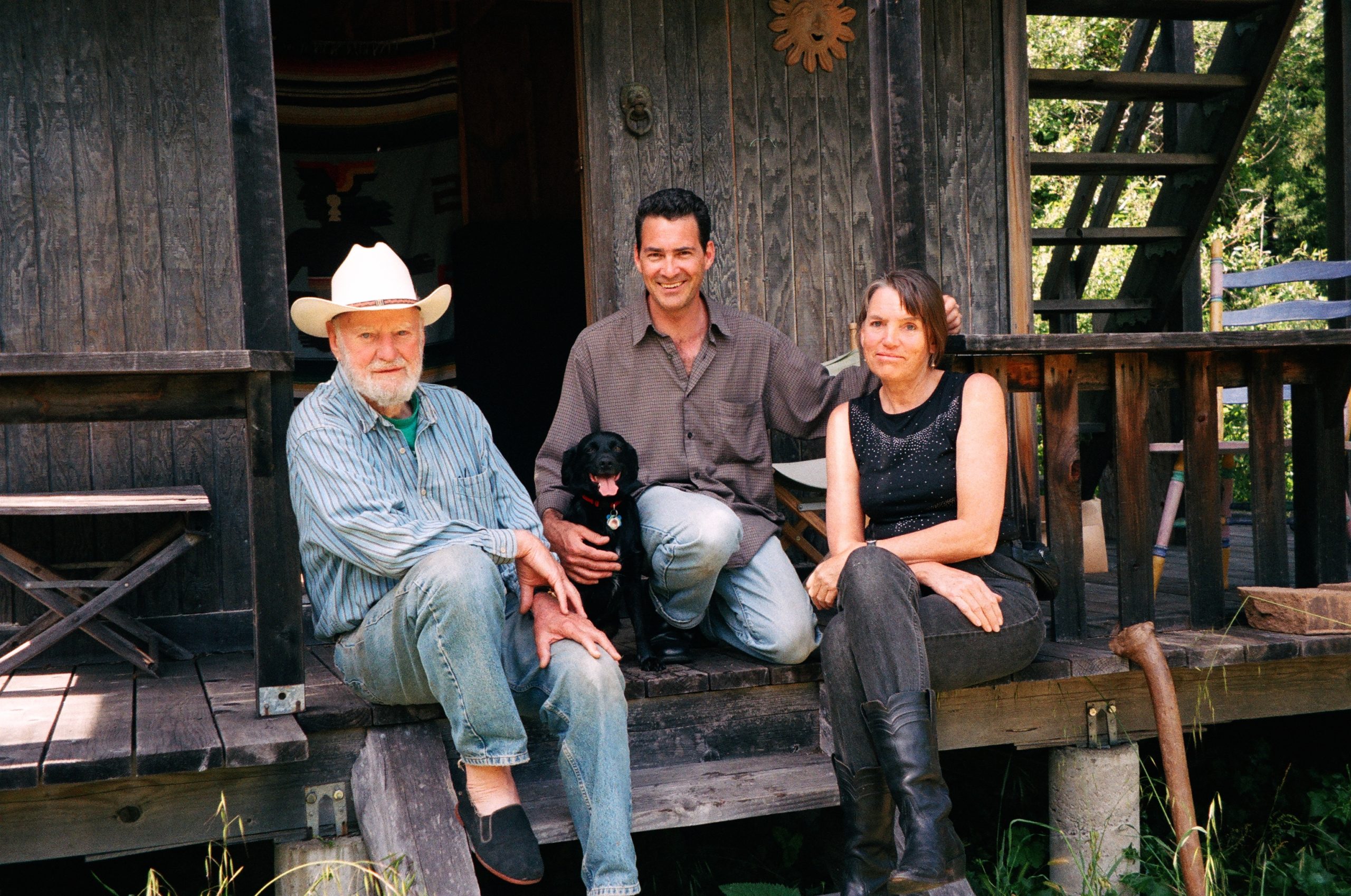
Lawrence Ferlinghetti’s Old West Hotel at his retreat in Bixby Canyon, Big Sur California. Ferlinghetti, Smokey, James McKee, and Maria Gilardin.
FERLINGHETTI: Open Eye, Open Mind
A series of three hour-long programs featuring San Francisco’s first poet laureate, Lawrence Ferlinghetti, in collaboration with Jim McKee of Earwax Productions, Maria Gilardin producer of TUC Radio and Erik Bauersfeld, Director of Bay Area Radio Drama. The project was funded by the Creative Work Fund of San Francisco.
Ferlinghetti’s involvement with radio and the audio medium goes back to the 1960s when he produced oral renditions and poetic sketches with Bauersfeld at Pacifica’s KPFA. The station at that time was a center for the audio arts, and other cultural broadcasting. As independent producers, Bauersfeld, Gilardin and McKee, along with Ferlinghetti, have had continuous active careers and awards for their contributions to the medium.
About a decade ago, during our weekly meetings at a little café bordering San Francisco Farmers’ Market, we began to record conversations with Ferlinghetti. The recordings were on widely diverse subjects but centered on the poet’s thoughts about the arts, politics, his experiences at sea during World War II, his now historic City Lights Books, his life as a publisher of local and international writers, and the themes and subjects of his own poetry and painting. The tapes also documented chance meetings, unanticipated live happenings in the street locations, the people and events that came by and participated.
Eventually we brought ourselves to Ferlinghetti’s cabins in the wilderness of Bixby Canyon, Big Sur. Fellow poets, writers, such as Alan Ginsberg and Jack Kerouac long ago visited and wrote about the coastal life there (Ginsberg’s long 1971 poem on the canyon’s Ocean Path, Kerouac’s novel, Big Sur). Our visits were planned principally around poems written by Ferlinghetti in and about the canyon, but Ferlinghetti with some aversion to structured sessions regards the wilderness as a place for spontaneity, from the most fanciful to the most serious. This diversity revealed a wider range of personal and poetic incidence to our portrayal. Finally it was there, in Ferlinghetti’s “bowl of hills” that the ideas for this series took shape.
Our earlier version of the work as portraiture was extended to embrace a new and consuming interest of Ferlinghetti, “The growing edge of American Consciousness.” In pursuing this interest he looked back to the consciousness of a generation of youths, who after World War II in the 1950s “took off to the west.” Many, including Ferlinghetti, settled in the San Francisco area, where ”all the diverse elements of post-war America were coming together in the first synthesis of a culture that became a distinct Western consciousness.” Ferlinghetti wonders what became of this consciousness and we accordingly made this quest a central theme of the series.
This new pursuit required little change in the material already selected, but gave it an additional direction. From his earliest poetry to the present, Ferlinghetti’s images and conversations provide a background of ideas that illuminate this search. In all, several hundred hours of recording were logged, selected, edited and composed into the three episodes.
One achievement had not been foreseen. Ferlinghetti, as most of the “beat” poets had made public readings an important part of their art. The oral expression gave great life to their political messages. But other expressive, lyric content needed something else, and Ferlinghetti regarded himself principally as a lyric poet. This realization came in the recording studio. With the wearing of headphones Ferlinghetti heard his voice as never before. He began reading with an intimacy and a new way of articulating the lyric significance of his poems. With the addition of McKee’s imaginative use of sound design and music the sense of Ferlinghetti’s lyrics came through with far greater acoustical effect.
Read about Ferlinghetti and lyricism
BARD Content:
Overview |. Archive. |. Photos |. Ensemble. |. Links
